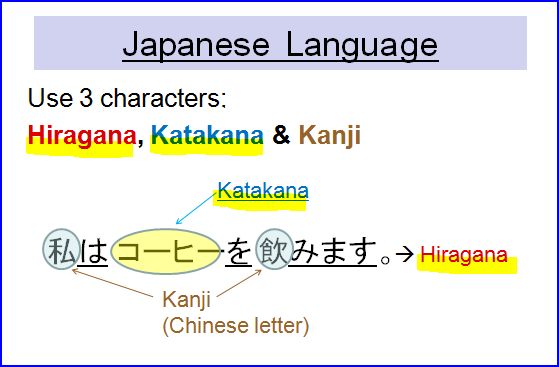Complete Hiragana Workbook with Video Tutorials
Become a Master of Japanese Scripts within a week!

"私はコーヒーを飲みます。" means "I drink coffee."
The Japanese use three types of scripts- Hiragana, Katakana and Kanji.
Hiragana – Japanese is a syllable-timed language while English is stress-timed. That means, you can understand how to read any Japanese words once you know how to pronounce each Hiragana character and some pronunciation rules.
On the other hand for English, you need to know the spelling as well as the pronunciation. We never know how to pronounce an English word such as “photo” by just knowing how to read alphabet: a,b,c…
The Japanese pronunciation rule is very systematic, thus, once you know it, it’s much easier for you to study Japanese and get more advanced.
Katakana – Basically, Katakana and Hiragana charts are correspondent to each other. There are 46 basic Katakana, 25 Daku-on, 33 contracted sounds and some special combinations of Katakana to describe foreign words.
For example, TV (terebi) and radio (rajio). In casual writing, Katakana is used when the meaning is emphasized (you’ll see many Katakana in comics). Also katakana is used for a variety of “onomatopoeia – sounds and emotional word” in Japanese. (e.g. “doki-doki” to represent a fast heart beat)
This course will give you enough information and skill to feel comfortable interacting with the Japanese… Imagine the look on the waiter’s face when you order your food in Japanese!
Now you can read and write the language of Japan, without months of classes, spending $100’s of dollars or trying to figure out confusing textbooks. Here are the features of this Hiragana course:
Over 46 pages of worksheets, detailed explanation and exercises (Downloadable)
Step-by-step writing stroke order is introduced for each character
Tutorial video lessons (75 mins in total)
Over 100 vocabulary words are introduced
Very effective Hiragana Flash Cards & Flashcard Videos
Teaches how to distinguish between similar-looking characters
Pronunciation guides for special usage of certain characters
Exercises to reinforce your new Hiragana skills
Shows you how to type Hiragana on a computer
Complete Hiragana Workbook
2. a i u e o
3. ka ki ku ke ko
4. sa shi su se so
5. ta chi tsu te to
6. na ni nu ne no
7. ha hi fu he ho
8. ma mi mu me mo
9. ya yu yo
10. ra ri ru re ro
11. wa wo n
4-1. Choo-on (long vowel)
4-2. Soku-on (double consonants)
4-3. Yoo-on (small や ゆ よ with contracted sound)
4-4. Devoiced vowels
4-5. Pronunciation of ん
5. Particles
Hiragana Flash Cards
1.Hiragana Flashcard Video: a-to
2.Hiragana Flashcard Video: na-yo
3.Hiragana Flashcard Video: ra-n

